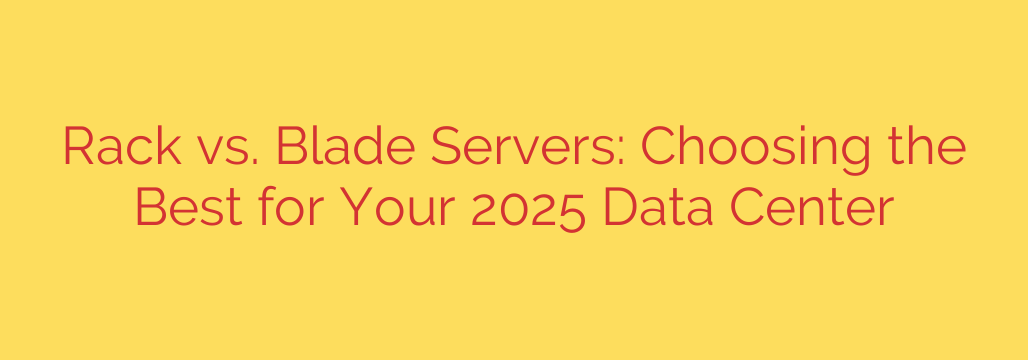
Deciding on the foundational server architecture for your data center heading into 2025 requires a thorough understanding of the core options: rack servers and blade servers. Each offers distinct advantages tailored to different operational needs and strategic goals. Making the optimal choice is crucial for efficiency, scalability, and cost-effectiveness.
Rack servers represent a traditional, highly flexible approach. These are self-contained units, typically 1U, 2U, or 4U in height, designed to slide into standard 19-inch racks. They come equipped with their own power supply, cooling, and network interfaces. Their primary strength lies in their versatility and ease of individual servicing or upgrades. If one server fails, it can often be replaced or repaired with minimal impact on others in the rack. This model is often preferred for environments that require diverse configurations, dedicated resources per server, or where density is not the absolute top priority. They generally have a lower initial CapEx (Capital Expenditure) per server unit compared to blades.
In contrast, blade servers offer maximum density and streamlined management. Blade servers are minimalist in design, fitting into a chassis or enclosure that provides shared resources like power, cooling, networking, and often storage connectivity. This shared infrastructure significantly reduces cabling and power consumption per server node. The high density makes them ideal for data centers where space optimization is paramount, such as large enterprises or hosting providers needing to pack significant compute power into a small footprint. Centralized management tools provided by the chassis manufacturer simplify monitoring, provisioning, and updates across multiple server blades simultaneously. While the initial CapEx for a fully populated blade chassis is higher, the potential for lower ongoing OpEx (Operational Expenditure) through shared resources and simplified management can lead to a favorable Total Cost of Ownership (TCO) in high-density deployments.
When evaluating which technology best suits your 2025 data center needs, several factors are critical:
- Density Requirements: How much compute power do you need within your available floor space? If maximizing density is key, blades typically outperform rack servers.
- Cost Model: Consider both initial purchase costs (CapEx) and ongoing operational expenses (OpEx). Rack servers might have a lower per-unit price, while blades can offer TCO advantages through shared infrastructure and reduced management overhead in scalable deployments.
- Management Philosophy: Do you prefer managing servers individually or centrally? Blade chassis offer powerful centralized management capabilities, which is a significant benefit for large-scale operations.
- Scalability Needs: How do you anticipate growing? Both scale, but differently. Rack scales by adding more units to racks. Blade scales by adding more blades to a chassis (up to its capacity) and then adding more chassis. Blade scaling within a chassis is generally faster to deploy.
- Power and Cooling Infrastructure: While both require robust infrastructure, blade servers can be more power-efficient per server unit due to shared power supplies, which can impact cooling requirements and costs in dense environments.
Ultimately, the decision between rack and blade servers for your 2025 data center hinges on aligning server architecture with your specific business requirements, technical capabilities, budget constraints, and future growth projections. Neither is universally “better”; the optimal solution is the one that provides the necessary performance, scalability, and manageability while meeting your cost and space limitations effectively. A careful assessment of these factors will guide you to the right choice for a resilient and efficient data center infrastructure.
Source: https://www.redswitches.com/blog/rack-server-vs-blade-server/








